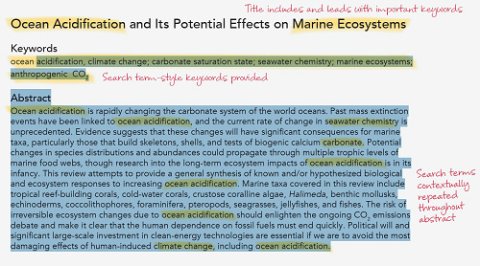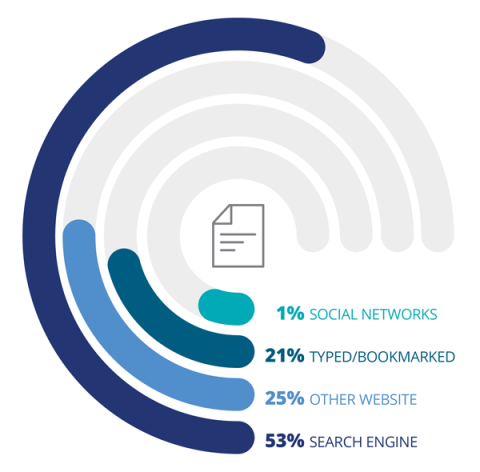Search Engine Optimization (SEO) for your article
2. Optimize your abstract

Place essential findings and keywords in the first two sentences of your abstract
Only the first two sentences normally display in search engine results
Repeat your keywords 3-6 times
Don't forget the purpose of your abstract is to express the key points of your research, clearly, and concisely
3. Use keywords throughout your article
Include keywords in your title (1-2), abstract (2-3), and keyword fields (5-7)
Keywords may be keyword phrases rather than just single words
Incorporate keywords in your headings too
Headings tip off search engines to the structure and content of your article
Find specific keywords on Google Trends and Google Adwords keyword tools
Remember that keywords are important for A&I services as well as SEO
Use keywords consistent with your field
If you're unsure, check the words used in your field's major papers
Let keywords flow naturally and in a contextual way
Search engines dislike too much keyword repetition, known as keyword stuffing, and may 'un-index' your article, making it hard to find online
4. Be consistent
Refer to author names and initials in a consistent manner throughout the paper
Remember to be consistent with any previous online publications
5. Build links
Link to your article across your social media, networking, and institutional sites
The more in-bound links to your article, the more search engines like Google will value and highlight your content
Encourage colleagues to link to your article
The more links from respected individuals/trusted sites the more powerful the effect. Don't forget to do the same for them!
Source: https://authorservices.wiley.com/author-resources/Journal-Authors/Prepare/writing-for-seo.html

